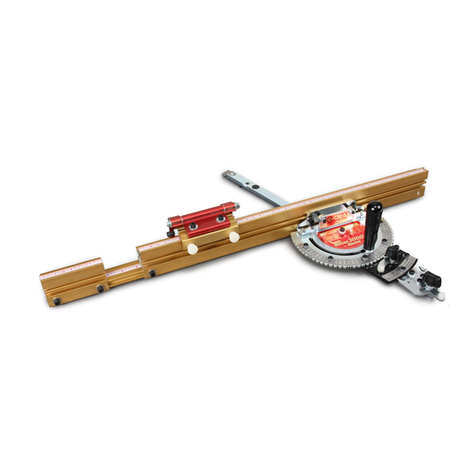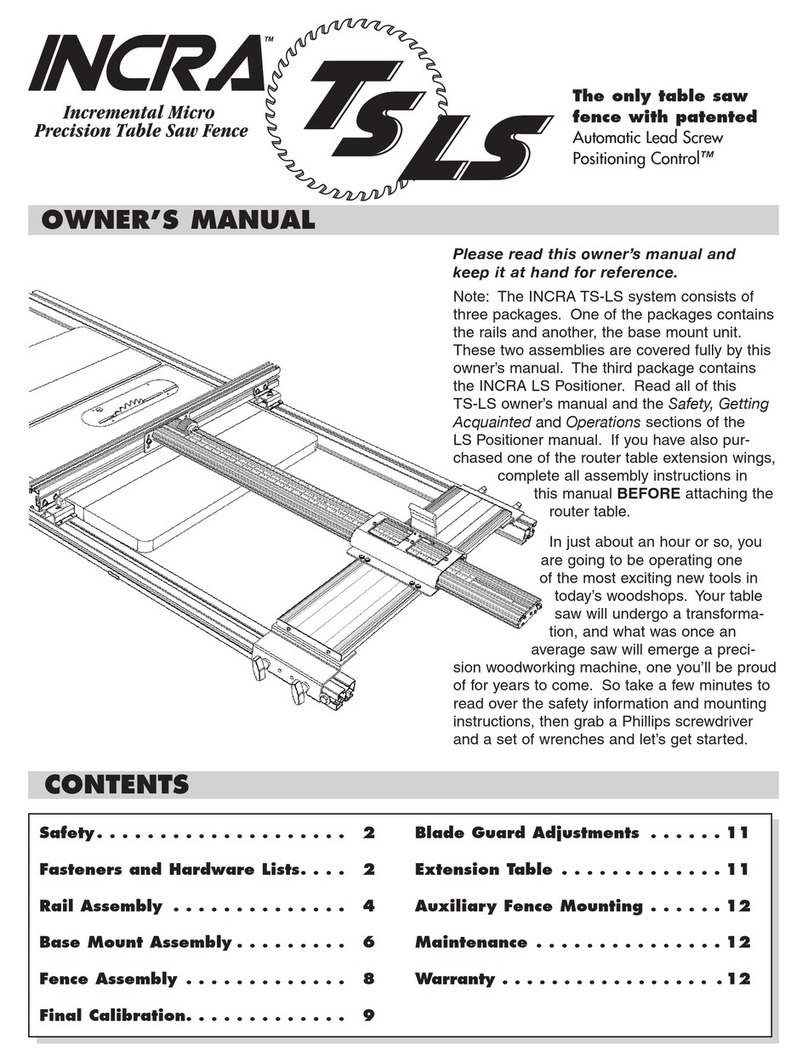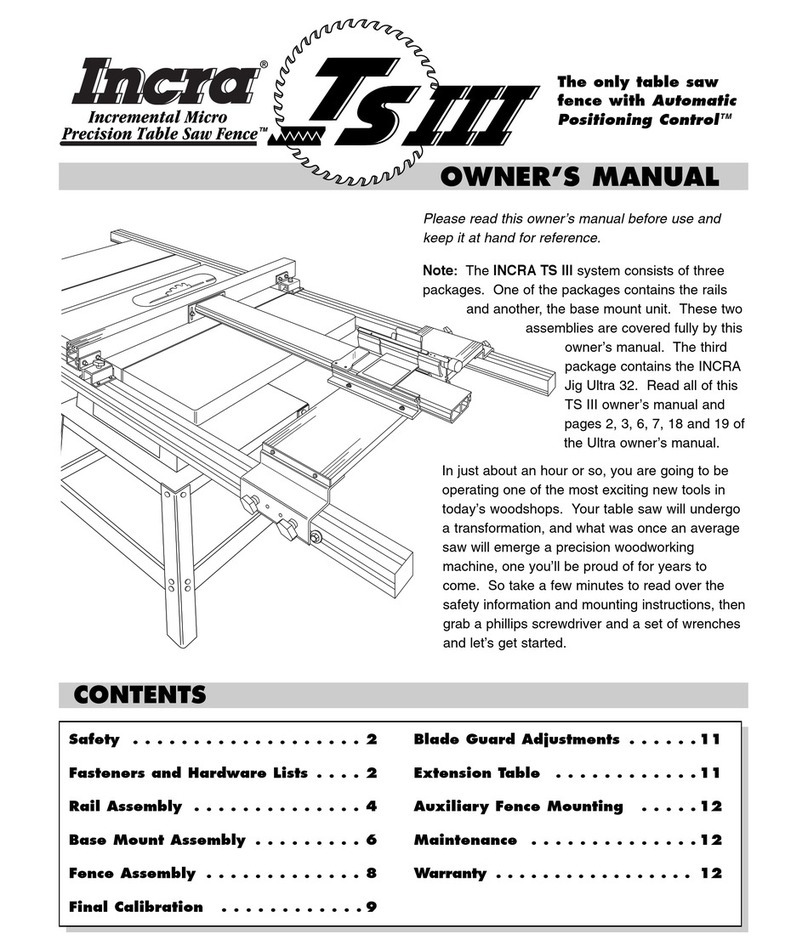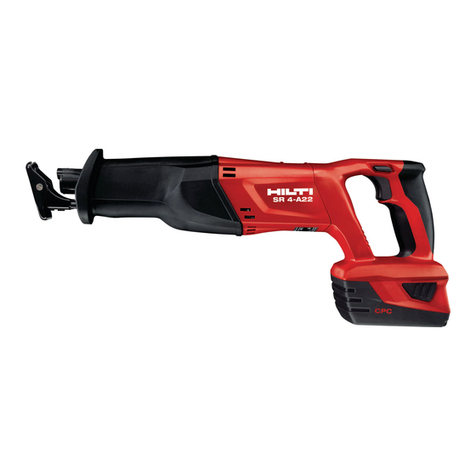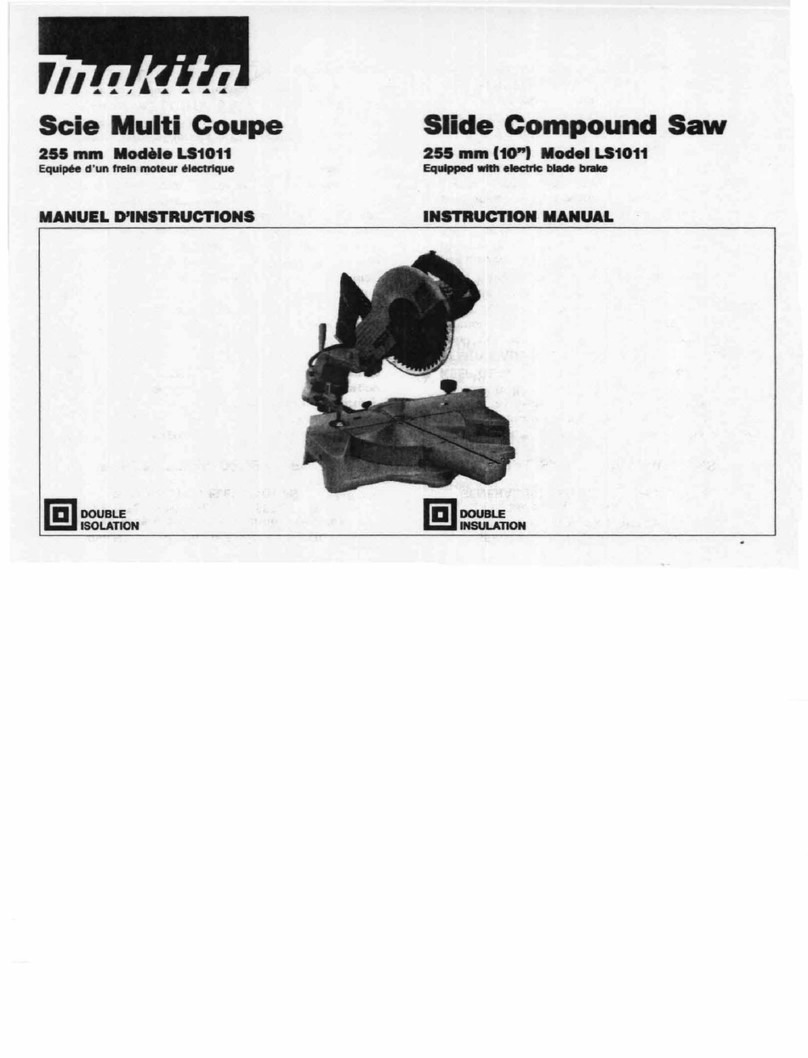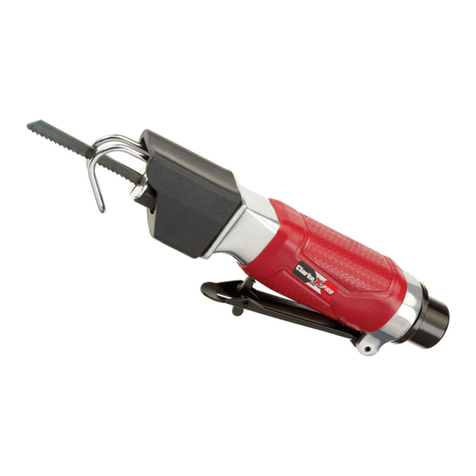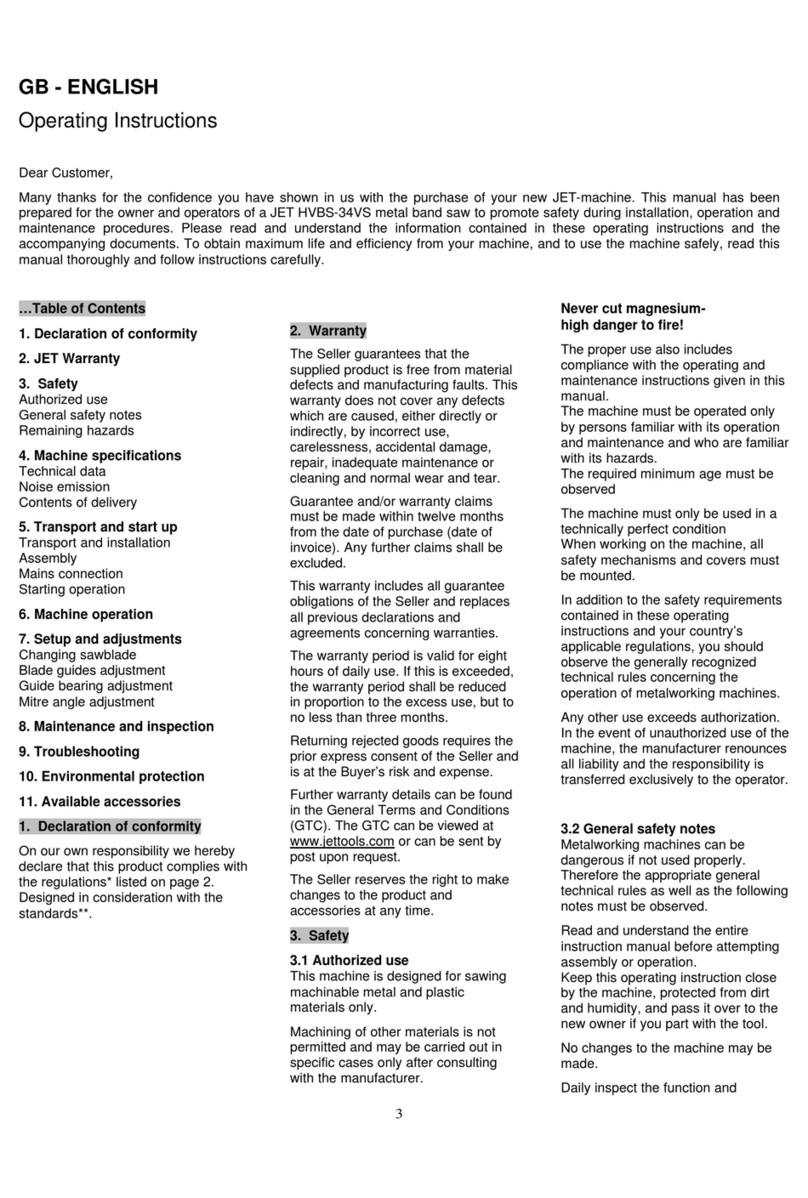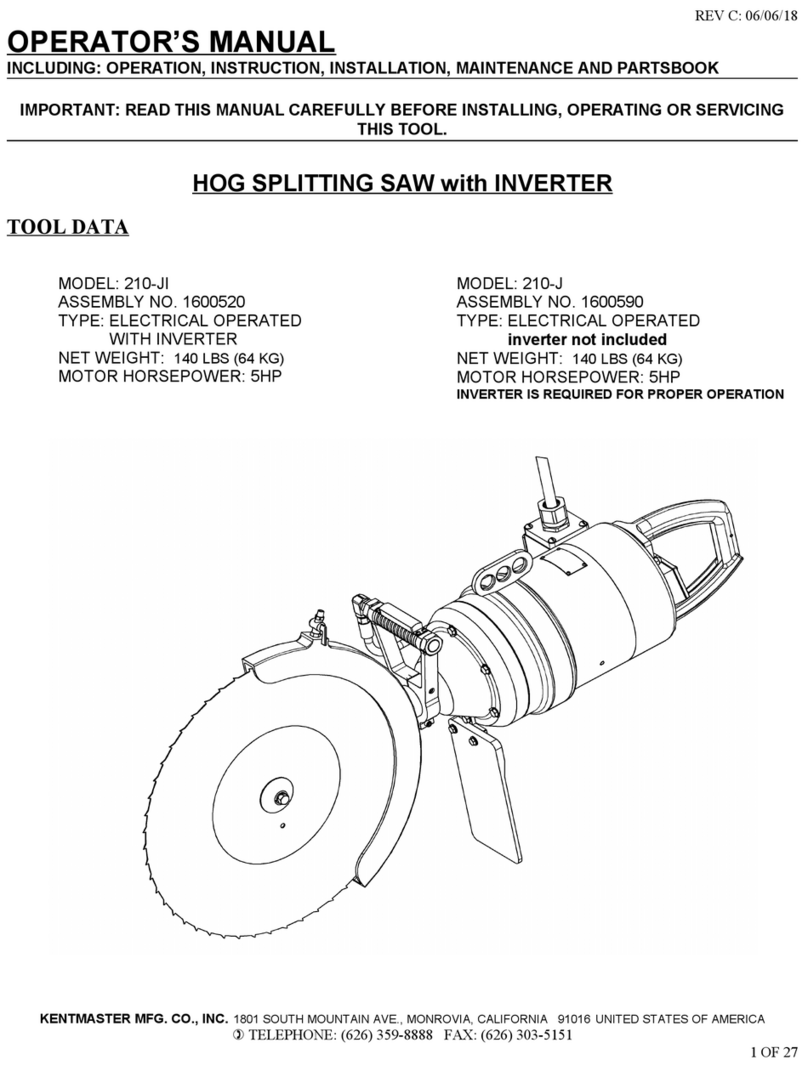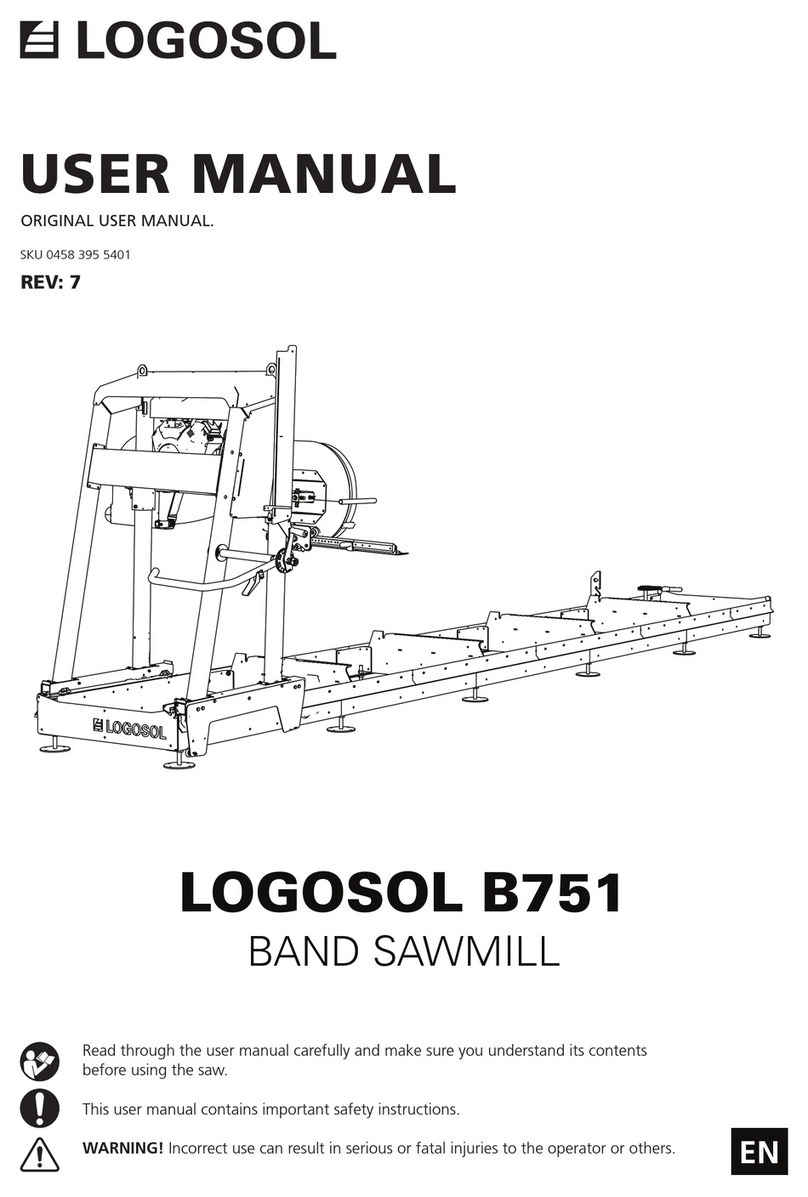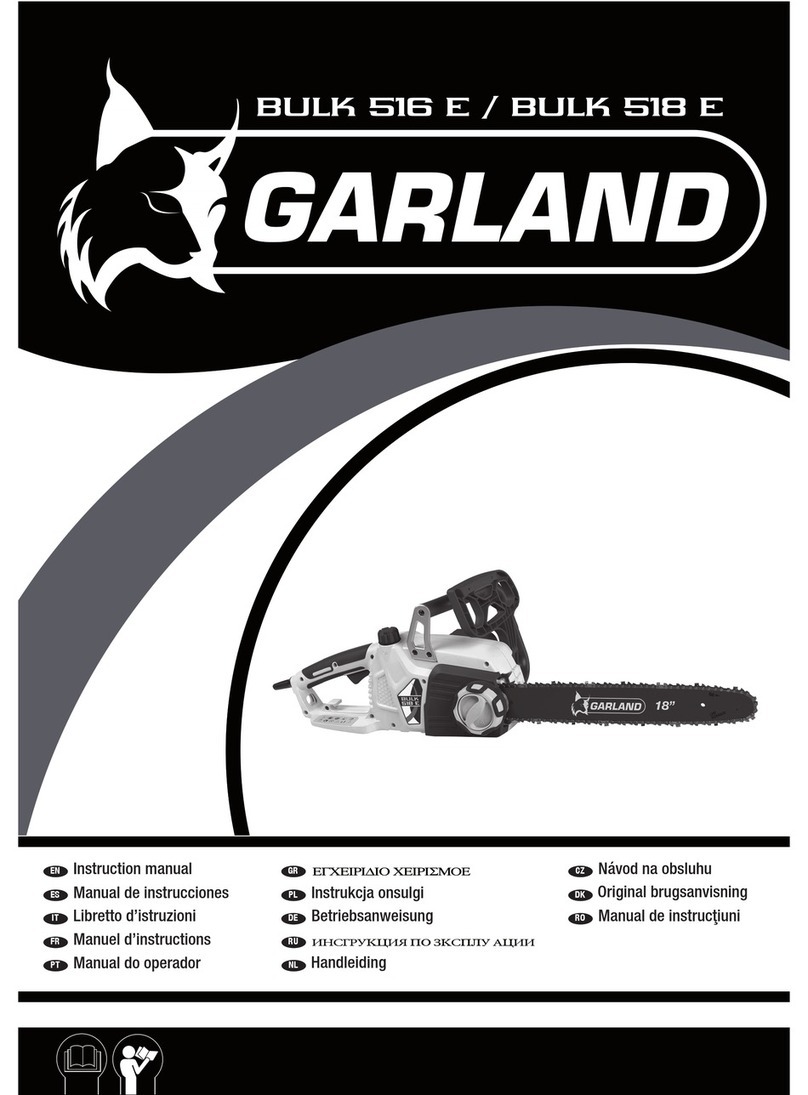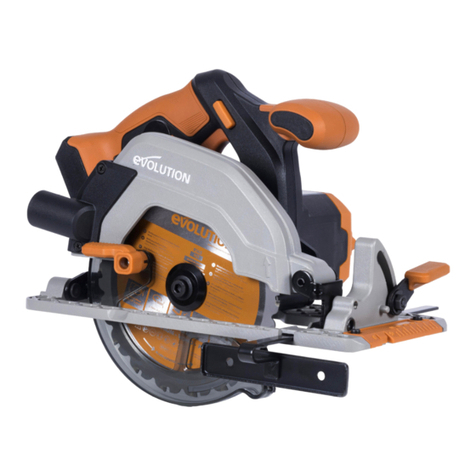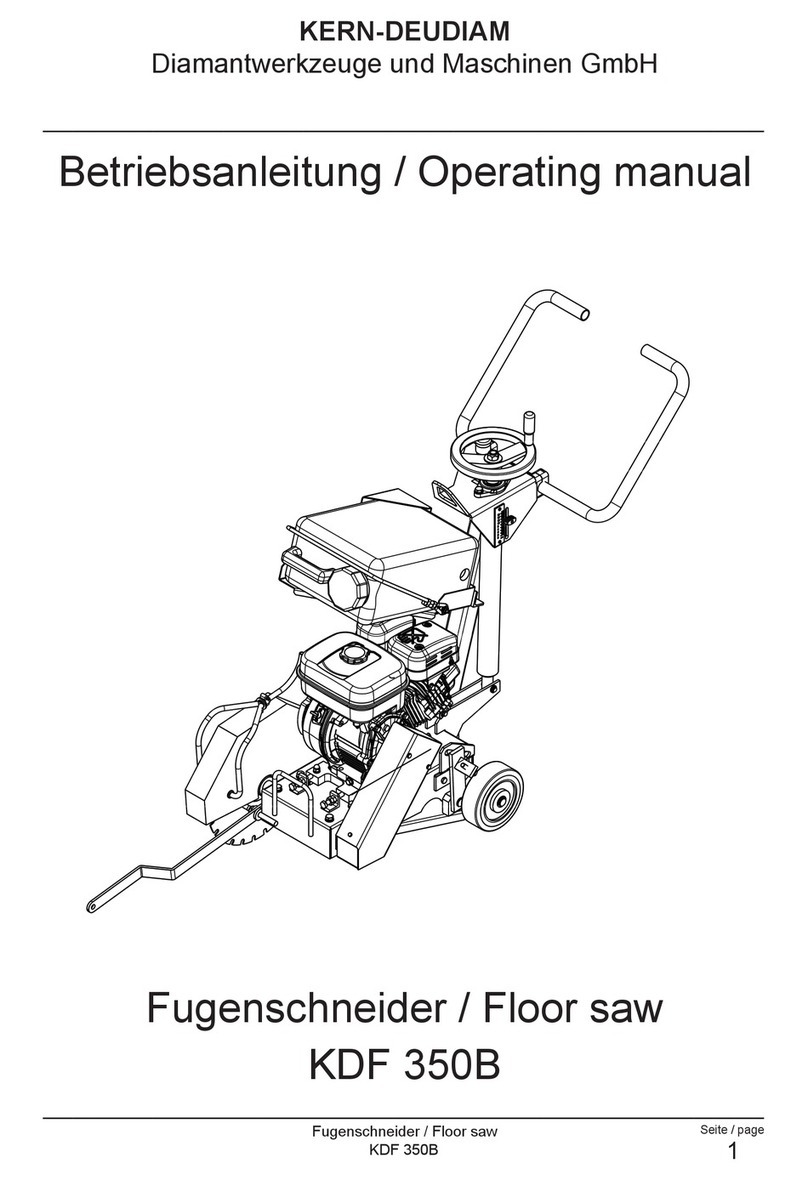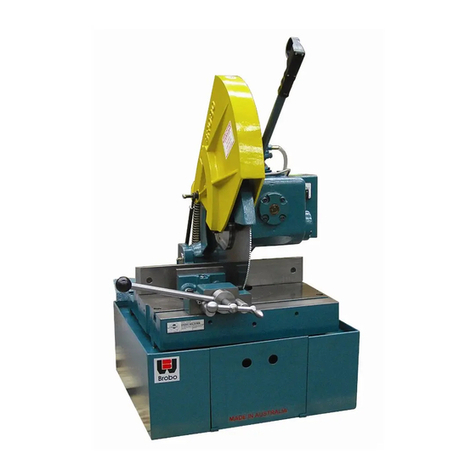Incra Miter1000SE User manual

Manufactured by Taylor Design Group, Inc. P.O. BOX 810262 Dallas, TX 75381 ©2020 by Taylor Design Group, Inc. All rights reserved.
°When using the INCRA Miter1000SE in conjunction with any other tool, first read and follow all instructions and safety
information in that tool’s owner’s manual.
° Never let the saw blade come in contact with the aluminum or steel components of the INCRA Miter1000SE.
° When using the INCRA Miter1000SE, always keep your hands clear of the saw blade and the line of cut.
° Always turn off the power and make sure that the saw blade comes to a complete stop before changing the setting of any part of
the INCRA Miter1000SE.
° Always securely tighten the large black clamping knob before starting any cut.
° Wear safety glasses, hearing protection, and follow all normal shop safety practices.
° After making any adjustments to the miter angle or fence position of your INCRA Miter1000SE, always verify safe clearance
between the blade and fence before turning on the saw.
° After making any adjustments to the fence position on the INCRA Miter1000SE, always make sure that the two socket head
screws are securely tightened.
° When using the INCRA Flip Shop Stop to position a piece for a cut, always hold or otherwise clamp the board between the stop
and the blade.
O’ M
www.incra.com
Important safety instructions for using the INCRA Miter1000SE
SAFET Y:
Before using the INCRA
Miter1000SE, read and
follow all of the instructions
and safety information in
this owner’s manual.
by

INCRA MITER1000SE OWNER’S MANUAL
Manufactured by Taylor Design Group, Inc. P.O. BOX 810262 Dallas, TX 75381 WWW.INCRA.COM
Page 2
Assembly and Calibration
1. Attach Clamping Knob and T-Clip
Remove the hex bolt that secures the protractor head
and replace with the large threaded knob included in
the hardware pack. The washer on the hex bolt must
be used with the threaded knob, Fig. 1. If the Miter
slot in your table saw has a T-slot, attach the T-clip to
the end of the miter bar as shown in Fig. 2.
2. Adjust the Miter Bar
Loosen the (2) fasteners that secure the fence to the
fence-mounting bracket and remove the fence. Adjust
the miter bar at each of the (3) expansion mechanism
locations in the miter bar for a good t in your table
saw’s miter slot. Turning the screw clockwise expands
the mechanism. You’ll nd (2) of the expansion loca-
tions in front of the protractor. Adjust these (2) front
expansion points rst, expanding a little at each of the
locations until the bar slides smoothly, Fig. 3.
Remove the large clamping knob with washer and
pivot the protractor head to gain access to the rear
expansion point, Fig. 4. After adjustment, replace the
washer and large clamping knob.
3. Attach the Fence
Place your Miter1000SE in the preferred miter slot
at your table saw. (Note: Left hand miter slot use
shown. See step 4 to convert fence for use in right
hand miter slot.) Attach the fence to the fence mounting
bracket and slide the fence to a position that leaves
safe clearance between the end of the fence and the
blade. Tighten the (2) 1/4-20 fasteners, Fig. 5.
Fig. 1 Attach Clamping Knob
Fig. 2 Attach T-Clip
Fig. 3 Expand Miter Bar to Fit (front)
Fig. 4 Expand Miter Bar to Fit (rear)
Fig. 5 Attach Fence
Large knob
Washer
Remove hex bolt
Miter bar
#10-24x1/4”
Phillips at head
screw
T-clip (use only in
T-slot
miter channels)
Fence removed for
access
Adjust (2) front expansion points
Position for
safe clearance
between fence
and blade
Adjust rear
expansion point
Remove knob and
rotate protractor for
access.
Replace after adjusting
rear expansion point.
1/4-20 socket
head screws

INCRA MITER1000SE OWNER’S MANUAL
©2020 by Taylor Design Group, Inc. All rights reserved.
Page 3
4. Left or Right of Blade
Your new Miter1000SE fence is factory congured for
use to the left of the blade. If you prefer to use your
Miter1000SE in the right hand miter slot just follow
the steps below.
Loosen the 1/4-20 socket head screw located at the
end of the 14” section of the fence, then slide out the
4” section of fence along with the attached extender
bar. Move the socket head screw, washer and rectan-
gular nut to the hole on the opposite end of the fence.
Slide the extender bar assembly into the end of fence,
capturing the rectangular nut in the T-slot on the
extender bar. The higher numbers on the extender
bar scale should be closest to the saw blade. Loosen
the (2) socket head fasteners that secure the 4”
section of fence and reverse it. Tighten all fasteners,
Fig 6. Slide the scale in the top of the fence out
and replace with the included reverse reading (0-14”)
scale.
5. Adjust Fence Mounting Bracket 90°
to Saw Blade
Set the protractor head to read 0°, engaging the tooth
on the actuator rmly into the 0° notch on the protractor
head, Fig. 7. Tighten the large clamping knob then tighten
the actuator thumbscrew.
Using a Phillips head screw driver, loosen the (3)
Phillips head screws that secure the fence-mounting
bracket to the protractor head. Unplug your table
saw, then use a reliable machinist square to set the fence
at 90° to the saw blade, Fig. 8. Tighten the (3) Phillips
head screws.
Your INCRA Miter1000SE Fence has been adjusted square to the table at the factory so no further ad-
justment should be required. If adding a wooden sub-fence, fine adjustments to the angle can be easily
made as described on Page 8.
TIP
This one time calibration prepares your INCRA Miter1000SE for work in either miter slot. Just re-
member that the accuracy of the INCRA Miter1000SE at any subsequent setting is dependent upon the accuracy
of your initial 90° calibration. Verify this important calibration with a test cut and ne tune as
necessary.
Squaring the fence to your table saw top
Fig. 6 Converting Fence for use on Right Side of Blade
Fig. 7 Set Protractor to 0°
Fig. 8 Square Fence to Blade
Move fasteners to
opposite end of fence
4”
fence
section
Extender
bar
Remove
extender
bar
assembly
Tighten large
clamping knob,
then tighten
actuator
thumbscrew
Actuator tooth
engaged at 0°
Loosen Phillips head screws and adjust
fence using reliable machinist square

INCRA MITER1000SE OWNER’S MANUAL
Manufactured by Taylor Design Group, Inc. P.O. BOX 810262 Dallas, TX 75381 WWW.INCRA.COM
Page 4
Operation – Changing Angle Settings
Before using your new INCRA Miter1000SE for
the rst time, take a few moments to review these
important operational procedures.
1. 5° Indexing (including 221/2° and 671/2°
settings)
Loosen the actuator thumbscrew and pivot the
actuator tooth away from the notches located on the
perimeter of the protractor head. Loosen the large
clamping knob and rotate the protractor head and
fence to the desired angle, Fig. 9. Then rmly engage
the tooth on the actuator with the corresponding
notch on the protractor head. The actuator tooth
should point directly to the desired angle on the scale.
Tighten the large clamping knob, then tighten the
actuator thumbscrew, Fig. 10.
2. Continuous Adjustments (for angle
settings ner than 5° increments)
Pivot the actuator tooth away from the notches on the
protractor head and tighten the thumbscrew. Now
loosen the small nylon thumbscrew on the actuator
and pivot the 1/10° vernier cursor toward the scale.
Rotate the cursor until it is aligned edge to edge with
the scale and tighten the nylon thumbscrew. When
you change miter angles, just align the desired angle
on the scale with the “0” cursor line, F ig. 11. For
1/10° adjustments, use the alignments as described in
the included 1/10° vernier cursor addendum.
CAUTION:
AFTER MAKING ANY ADJUSTMENTS TO THE
MITER ANGLE OF YOUR INCRA MITER1000SE,
ALWAYS VERIFY SAFE CLEARANCE BETWEEN
THE FENCE AND THE BLADE BEFORE TURNING
ON THE SAW.
Fig. 10 Locking the Protractor
Miter1000SE
Fig. 9 Changing Angles
Fig. 11 Continuous Adjustments
Loosen large
clamping knob
and actuator
thumbscrew
Pivot the actuator tooth
away from protractor
Tighten large
clamping knob
then tighten
actuator
thumbscrew
Rotate protractor
Firmly engage
actuator tooth with
protractor
Pivot cursor
to scale
Pivot actuator tooth away from
protractor and tighten thumbscrew

INCRA MITER1000SE OWNER’S MANUAL
©2020 by Taylor Design Group, Inc. All rights reserved.
Page 5
Flip Fence and Flip Shop Stop - Calibration and Operation
As you look at your new INCRA Flip Shop Stop and
Flip Fence for the rst time you will see an interesting
detail. The front face of the fence uses a tongue and
groove arrangement to accept a mating feature on the
ip arms, Fig. 12. When the ip arm is down with
the two opposing features engaged, it becomes
impossible for the sharp corner of a mitered board
end to wedge between the fence and ip arm. Com-
bined with INCRA’s famous incremental positioning
capabilities, you’ll soon be duplicating cut off lengths
with machine shop precision.
Zeroing the Fence Scales
To zero the main fence scale for 90° work, rst set
the protractor to the 0° setting and lock in place.
Clamp the Flip Shop Stop to the fence so that the 0”
mark on the fence scale reads directly under the end
of the gold component of the Flip Shop Stop, Fig. 13.
Now loosen the (2) 1/4-20 socket head screws that
secure the fence to the fence mounting bracket and
slide the fence toward the blade until the Flip Arm on
the stop contacts the blade. Re-tighten the fasteners,
Fig. 13A.
For stopped cuts beyond the range of the main fence you’ll need to
calibrate the extender bar scale. Clamp the INCRA Flip Shop Stop to
the 4” fence extender. (Use the scale on the short section of fence as
a reference for clamping the stop to the same position each time you
use it.) Now loosen the 1/4-20 socket head screw located at the end of
the longer fence and slide the 4” fence and extender bar out. Use
a tape measure to set the distance between the blade and the ip arm
at 16” and re-tighten the fastener, Fig. 14. Now simply slide the scale
in the extender bar to read 16” at the end of the longer main fence
section, Fig. 14A.
Fig. 12 Flip Shop Stop
Fig. 13 Zeroing Fence Scale
Fig. 13A Slide Fence to Blade
Fig. 14A Align Scale
Fig. 14 Setting Extender Bar Scale
Tongue and groove
Clamp Flip Shop Stop at
0” position
Slide fence until ip
arm contacts blade,
then tighten fasteners
Slide scale to read
16” at end of main fence
Loosen fastener Clamp
stop to
4” fence
section
Slide extender bar out
until ip arm is 16” from
blade then tighten fastener
Protractor
set at 0°

INCRA MITER1000SE OWNER’S MANUAL
Manufactured by Taylor Design Group, Inc. P.O. BOX 810262 Dallas, TX 75381 WWW.INCRA.COM
Page 6
For mitered cutting, a test cut is often the most ac-
curate means of setting the fence and extender bar
scales since measuring to the tooth of a blade set at
an angle to the fence can be difcult. Begin by setting
the desired miter angle and check for safe clearance
between the fence and blade. Clamp the stop to the
fence about 10” away from the blade. Miter a piece of
scrap stock with this setup. Measure the length of the
cut piece, Fig. 14B. Then simply slide the scale on
the fence to read the length of the cut directly under
one end of the stop.
Micro Adjusting
To micro adjust your Flip Shop Stop’s position, begin
by loosening the (2) socket head screws located on
the top of the stop body. Now turn the micro adjust
socket head screw to fine tune the stop position,
Fig. 15. When unscrewing the micro adjust screw,
apply pressure to the stop body to keep it against the
screw end. After adjustment, always tighten the (2)
socket head screws on top of the stop body.
Flip Arms and Stop Rods
The dual ip arms and stop rods provide a variety of
stop congurations. The ip arms can be used without
the stop rods when you want to take advantage of the
fence/arm tongue and groove feature for stop control
on mitered board ends. Typically, you will use the
longer rod to join the two arms together, Fig. 16. This
produces an arrangement that, when pivoted, moves
both arms simultaneously. The rod can be positioned
so that it is the actual stop surface or it can be posi-
tioned slightly behind the front of the arm so that the
aluminum arm is the actual stop surface.
By placing one of the shorter 1-1/2” rods in each of the
two stop arms, you can use the two stop arms in-
dependently, Fig. 17. For example, you can calibrate
one for work to the left of the blade and the other
for work to the right. On one side of the blade you
might want to position the stop rods to provide two
different cut off lengths from one stop position. By
using varying combinations of long or short rods you
can create as much as 7-3/4” between the two stop
positions.
Fig. 14B Setting Scales for Angled Cuts
Fig. 15 Micro Adjusting
Fig. 16 Long Stop Rod
Fig. 17 Short Stop Rods
Slide scale to read
cut length here
Measure length
of cut
Loosen (2) socket
head screws
Turn this socket head screw
to adjust
Long stop rod used to
join ip arms
Short stop
rods allow
independent
ip arm
use

INCRA MITER1000SE OWNER’S MANUAL
©2020 by Taylor Design Group, Inc. All rights reserved.
Page 7
Making a Zero Clearance Wooden Sub
Fence
A sub fence can be used to provide tear out control
as well as support for your workpiece up to and be-
yond the blade. A good material to use for making
your zero clearance sub fence is 3/4” medium density
berboard (MDF). Use the drill and counter bore di-
mensions shown in Fig. 18. Attach using the supplied
fasteners. Adjust the length of the fence to accom-
modate your application. Note: In applications where
the incremental stopping capability of the Flip Shop
Stop is required, the wooden sub fence can be no
taller than 2-1/2”.
Expanded Flip Stop Clamping Mode
The two-part body design of the INCRA Flip Shop
Stop allows for use with up to a 3/4” thick wooden sub
fence. To expand the INCRA Flip Shop Stop, loosen
the (2) socket head screws located on the top of the
stop body, then slide the upper portion of the stop
off. Now slide the upper portion back on, capturing
the rectangular nuts in the second T-slot located on
the lower portion (gold component) of the stop body,
Fig.19.
To avoid the saw blade pulling your workpiece into the cut, add a strip of adhesive backed sandpaper to the front
face of the wooden sub fence.
TIP
WARRANTY
TAYLOR DESIGN GROUP, INC. WARRANTS THIS PRODUCT FOR ONE YEAR FROM DATE OF PURCHASE. WE
WILL REPAIR ANY DEFECTS DUE TO FAULTY MATERIAL OR WORKMANSHIP, OR AT OUR OPTION, REPLACE
THE PRODUCT FREE OF CHARGE. PLEASE RETURN THE FAILING COMPONENT ONLY, POSTAGE PREPAID,
ALONG WITH A DESCRIPTION OF THE PROBLEM TO THE ADDRESS BELOW. THIS WARRANTY DOES NOT
APPLY TO PARTS WHICH HAVE BEEN SUBJECTED TO IMPROPER USE, ALTERATION, OR ABUSE.
LIFETIME WARRANTY ON POSITIONING RACKS
IF AN INCRA POSITIONING RACK IN THIS TOOL BECOMES DAMAGED FOR ANY REASON, TAYLOR DESIGN
GROUP WILL REPLACE IT FREE OF CHARGE FOR AS LONG AS YOU OWN YOUR TOOL. RETURN THE DAM-
AGED RACK, POSTAGE PREPAID, PLEASE ALLOW 1 TO 2 WEEKS FOR DELIVERY.
Fig. 18 Making a Sub Fence
Fig. 19 Expanded Flip Stop Clamping Mode
21/2” max (see note)
5/16” through hole w/
3/4” dia. x 3/8” deep
counter bore
1/4-20
rectangular nut
1/4” at washer
1/4-20 x 3/4”
socket head screw
11/16”
Gold component
Loosen socket head
screws and slide red
assembly into 2nd T-slot
on gold component
Sub fence
3/4”

©2020 by Taylor Design Group, Inc. All rights reserved. Rev.1/20
Page 8
Manufactured by Taylor Design Group, Inc. P.O. BOX 810262 Dallas, TX 75381 WWW.INCRA.COM
INCRA MITER1000SE OWNER’S MANUAL
1) Place a square against the front face of your fence.
If you see a gap between the top of the fence and your
square rst loosen both outside nuts. Tighten one of
inside nuts about 1/6 turn against the rear leg of the
bracket as shown in Figure 20, and then tighten the
other inside nut by the same amount in the same di-
rection against the rear leg. Alternate this 1/6 turn
procedure between the two nuts until the fence is
perfectly square to the table DO NOT TURN THE
SET SCREW and DO NOT over tighten the nuts. It
usually takes less than 1 full turn of the nuts to square
your fence to the table.
If you see a gap between the bottom of your fence and
the square, rst loosen both inside nuts. Tighten one
of outside nuts about 1/6 turn against the rear leg of
the bracket as shown in Figure 21, and then tighten
the other outside nut by the same amount in the same
direction against the rear leg. Alternate this 1/6 turn
procedure between the two nuts until the fence is
perfectly square to the table DO NOT TURN THE
SET SCREW and DO NOT over tighten the nuts. It
usually takes less than 1 full turn of the nuts to square
your fence to the table.
2) After the fence has been squared to the table as
described above, tighten both of the loose nuts against
the rear leg of the bracket to secure your setting,
Figure 22. DO NOT TURN THE SET SCREW.
Fig. 20 To Tilt Fence Forward
Fig. 21 To Tilt Fence Back
Fig. 22 To Lock Setting
Adjustable Fence Mounting Bracket
Your INCRA Miter1000SE Fence has been adjusted square to the table at the factory so
no further adjustment should be required. If adding a wooden sub-fence, ne adjust-
ments to the angle can be easily made as described below.
Incra’s fence mounting bracket enables any fence to be quickly and easily adjusted for perfect squareness to the
table. We have provided two adjustment points so you can also neutralize twist or thickness variation that is
sometimes present in homemade wooden fences or sub-fences.
1st, loosen both
outside nuts
2nd, rotate 1/6
turn as shown
alternating
between
2 inside
nuts until
square
1st, loosen
both
inside
nuts
2nd, rotate 1/6
turn as shown
alternating
between 2
outside nuts
until square
After adjustment, re-tighten the
remaining loose nuts
MADE IN THE
USA
Manufactured by:
Taylor Design Group, Inc.
P.O. Box 810262 Dallas, TX 75381
www.incra.com
P: 972-242-9975/F: 972-242-9985
INCRA is a Registered Trademark of Taylor Design Group, Inc.
You can also register your INCRA product
online at www.incra.com
Scan this QR code to register your product online
It’s quick and easy!
ONLINE WARRANTY REGISTRATION
Table of contents
Other Incra Saw manuals
